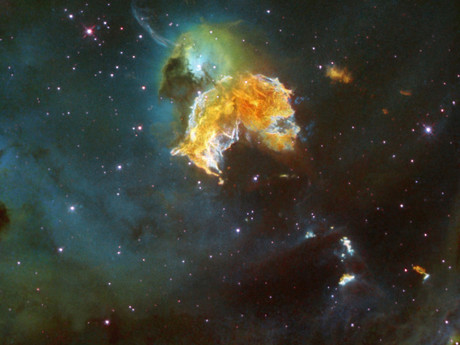Join the search for exploding stars

The Australian National University (ANU) is inviting citizen scientists with an interest in astronomy to join a search for exploding stars called supernovae.
Astrophysicists use supernovae, which are explosions as bright as 100 million billion billion billion lightning bolts, as light sources to measure the universe and acceleration of its growth. As explained by Dr Brad Tucker, co-lead researcher on the project, scientists can measure the distance of a supernova from Earth by calculating how much the light from the exploding star fades.
“Using exploding stars as markers all across the universe, we can measure how the universe is growing and what it’s doing,” Dr Tucker said.
“We can then use that information to better understand dark energy, the cause of the universe’s acceleration.”
The ANU project will allow citizen scientists to use a web portal on Zooniverse.org to search images taken by the SkyMapper telescope — the only telescope that is doing a comprehensive survey of the southern sky — at the ANU Siding Spring Observatory for the SkyMapper Transient Survey. Volunteers will be asked to scan the SkyMapper images to look for differences and mark up those differences for the researchers to follow up.
“With the power of the people, we can check these images in minutes and get another telescope to follow up,” Dr Tucker said.
“Thousands of passionate people can achieve things that would take scientists working alone years to do.”
Co-lead researcher Dr Anais Möller said SkyMapper is taking thousands of images every month for the supernova search project, examining an area 10,000 times larger than the full moon every week.
“As well as finding Type Ia supernovae, which we use to measure how the universe is expanding, we will also find other types of supernovae that change in brightness with time — ranging from a couple of weeks to months,” she said.
“If we discover supernovae early we have a good chance of understanding them, as well as having better measurements for the expansion of the universe.
“The first people who identify an object that turns out to be a supernova will be publicly recognised as co-discoverers.”
To join the citizen science project, visit www.zooniverse.org/projects/skymap/supernova-sighting.
Colon cancer DNA in blood can guide chemo decisions
A simple blood test could change how doctors decide which patients with colon cancer need...
Non-invasive blood test helps rule out oesophageal cancer
Designed and developed in Australia, the PromarkerEso test is designed to offer a quick,...
Taste-based flu test enables rapid diagnosis
The diagnostic tool consists of the sensor molecule thymol and a virus-specific sugar building...





